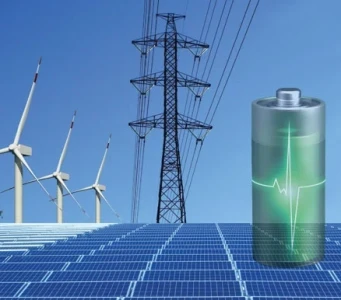FERC Approves California ISO's Interconnection Reforms: A Major Step Forward for Renewable Energy

In a significant development for the renewable energy landscape, the Federal Energy Regulatory Commission (FERC) has approved the California Independent System Operator's (California ISO) proposed interconnection reforms. This decision is poised to streamline the process of connecting new energy resources to the grid, fostering a more efficient integration of renewable energy sources in one of the nation’s largest electricity markets.
Understanding the Need for Reform
As the demand for renewable energy continues to surge, the existing interconnection processes have faced growing criticism for being slow and cumbersome. The traditional framework often leads to lengthy wait times for developers seeking to connect their projects to the grid, which can stifle innovation and delay the transition to cleaner energy. With California aiming to achieve a carbon-free grid by 2045, these challenges are more pressing than ever.
The reforms approved by FERC are designed to address these inefficiencies by simplifying the interconnection process. The California ISO’s plan includes measures to enhance transparency, establish clearer timelines, and create a more standardized approach for all developers. By doing so, it seeks to reduce the time and costs associated with connecting new renewable resources, thus accelerating the deployment of clean energy technologies.
Key Features of the Approved Reforms
The reforms encompass several key elements that are expected to significantly improve the interconnection process:
-
Streamlined Processes: The new framework introduces a more straightforward application process for interconnection requests, allowing developers to navigate the complexities with greater ease. This is crucial for fostering a robust pipeline of renewable projects that can come online more quickly.
-
Enhanced Transparency: With improved visibility into the interconnection process, developers will have a better understanding of the status of their applications and the timelines involved. This transparency is expected to foster trust and collaboration between developers and the California ISO.
-
Standardization of Procedures: By establishing standardized procedures for interconnections, the reforms aim to create a level playing field for all developers. This consistency is vital for ensuring that projects can be evaluated fairly and efficiently, regardless of their size or type.
-
Increased Capacity for Renewables: The reforms are anticipated to facilitate a greater capacity for renewable energy projects to connect to the grid. This is essential for California to meet its ambitious climate goals and transition to a clean energy future.
Implications for Renewable Energy Development
The approval of these reforms has far-reaching implications for renewable energy development in California and beyond. By reducing interconnection bottlenecks, the state can unlock the potential of various renewable resources, including solar, wind, and energy storage. This, in turn, will not only support California’s climate objectives but also contribute to job creation and economic growth in the green energy sector.
Moreover, as other states look to California as a model for clean energy transition, the successful implementation of these reforms may inspire similar changes nationwide. The lessons learned from California’s experience could serve as a blueprint for other regions grappling with interconnection challenges.
A Collaborative Approach
The success of these reforms will depend on collaboration among various stakeholders, including state regulators, utilities, and developers. Open communication and cooperation will be crucial to ensure that the new processes are implemented effectively and that any unforeseen challenges are addressed promptly.
Additionally, the involvement of community stakeholders and local governments will be important in shaping how renewable projects are integrated into local ecosystems. Ensuring that communities benefit from renewable energy development can foster greater public support and acceptance.
Conclusion
The FERC’s approval of the California ISO's interconnection reforms marks a pivotal moment in the evolution of the renewable energy sector. By streamlining the interconnection process, California is taking significant strides toward achieving its ambitious clean energy goals. The potential for increased renewable energy capacity not only supports environmental sustainability but also bolsters the economy and creates jobs.
As the nation seeks to transition to a more resilient and sustainable energy system, California’s approach may serve as a guiding light. The success of these reforms could set a precedent for other states, encouraging a collaborative and efficient path toward a cleaner energy future. The implications of this decision extend far beyond California, resonating throughout the entire renewable energy landscape as the U.S. continues its march toward decarbonization.









